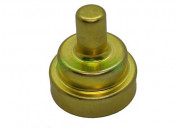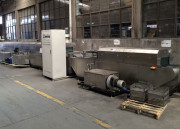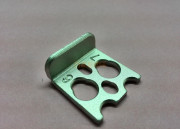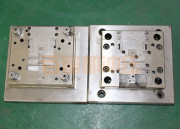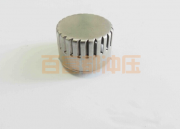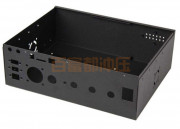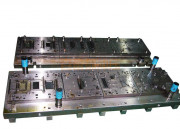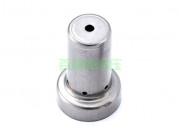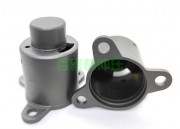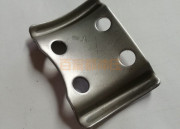Posted at 22/07/2022 , By deep drawing , Categories Blog,Techniques , Comment Comments Off on Stamping die design method and operation steps are introduced in detail 1. Analysis of stamping process of stamping parts
Stamping parts must have excellent stamping process, so that qualified stamping parts can be produced in the simplest and most economical way, and the process analysis of stamping can be completed according to the following methods:
1. Be able to read the part drawing: In addition to the shape and size of the part, the key points are to understand the requirements of the part accuracy and surface roughness.
2. Analyze whether the structure and shape of the parts are suitable for stamping processing.
3. Analyze whether the benchmark selection and size marking of parts are reasonable, and whether the accuracy of size, orientation and shape is suitable for stamping processing.
4. Whether the rough surface requirements of the blanking section are too high.
5. Whether there is a strong enough production batch.
If the craftsmanship of the part is too poor, the planner should be communicated and a plan to revise the plan should be proposed. Assuming the production batch size, other production methods should be considered for processing.
2. Stamping process planning and best process design.
1. According to the shape and size of the stamping parts, start to judge the nature of the stamping process, such as punching, bending, deep drawing, bulging, reaming and other stamping die planning methods and processes.
2. Calculate the degree of deformation of each stamping method. If the degree of deformation exceeds the limit deformation degree, the number of punches for the process should be calculated.
3. According to the deformation characteristics and quality requirements of each process, organize a reasonable stamping sequence. Care should be taken to ensure that the deformation area of each process is a weak area, and the formed parts (including punched holes or shapes) must not participate in deformation in subsequent processes. Polygonal zigzag parts should be bent first and then bent inward, and necessary auxiliary processes and processes such as shaping, leveling, and heat treatment should be organized.
4. On the premise of ensuring the accuracy of the parts, according to the production batch and the blank positioning and unloading requirements, determine a reasonable process combination method.
5. More than two process plans should be planned, and the best process plan should be selected from the aspects of quality, cost, productivity, mold sharpening and repair, mold life, operation safety, etc.
6. Start to judge the stamping equipment of each process.
3. Blank planning and layout drawing design of stamping parts
1. According to the performance scale of stamping parts, calculate the blank size and make a blank drawing
2. According to the roughness scale, plan the layout drawing and calculate the data utilization rate. To plan a variety of nesting plans, choose the best plan by comparison.
Fourth, die design
1. Determine the die structure method of each process of stamping processing, and make a schematic diagram of the die.
2. Carry out specific structural planning for the 1-2 processes specified by the mold, and make the mold operation diagram. The planning method is as follows:
(1) Determine the type of mold: whether it is a simple mold, a continuous mold or a composite mold.
(2) Design of mold working parts: Calculate the size of the edge of the convex and concave molds and the length of the convex and concave molds, and determine the structure and connection and fixing methods of the convex and concave molds.
(3) Determine the positioning and spacing method of the blank, and plan the corresponding positioning and spacing parts.
(4) Determine the pressing, unloading, ejecting and pushing methods, and plan the corresponding pressing plates, unloading plates, and pushing blocks.
(5) Formwork design: It includes the design of upper and lower die bases and guiding methods, and standard formwork can also be selected.
(6) On the basis of completing the above operations, make a mold operation diagram according to the scale. First make blanks with double-dot-dash lines, then make parts, then make positioning and spaced parts, connect the above parts with connecting parts, and finally make pressing and unloading parts in the proper position. According to the specific conditions of the mold, the above order can also be adjusted appropriately.
(7) The outer contour size of the mold, the closed height of the mold, the cooperation size, and the design method and process mold design of the cooperation type stamping die should be marked on the work map. The job drawing should indicate the requirements of the production accuracy and skill conditions of the mold. The job drawing should be made according to the national drawing standards, with a standardized title bar and detailed table. If it is a blanking die, make a layout drawing on the upper left corner of the work drawing.
(8) Calculate the pressure center of the mold and check whether the pressure center coincides with the center line of the mold handle. If they do not coincide, make corresponding corrections to the mold results.
(9) Calculate the punching force, finally select the punching equipment, and check the relevant dimensions of the die and the punching equipment (closed height, work surface, die handle device dimensions, etc.).
Read More →

